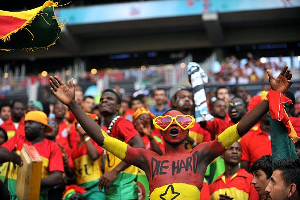The average interest paid on deposits in the banking sector has seen a continues decline in three consecutive months, even as banks bid to attract deposits with various promotions, at a time cheap funds have become scarce.
In its latest assessment of the interest rate regime in the country, the central bank reports that the average interest on deposits dropped to 11.5 percent in October, from 12.2 percent in September 2016. The month of August recorded an average interest of 12.3 percent.
The data from the central bank shows that three banks – Unibank (15.6percent), Bank of Africa (14.1) and Stanbic Bank (14.1percent) – pay the best interest on deposits.
At the bottom are ADB (6.2percent), Energy Bank (5.2percent) and Standard Chartered Bank (4.4percent).
However, when it comes to interest on borrowing or loans, Bank of Baroda is one of the banks consumers can turn to as it has one of the lowest base rates, which is 15 percent.
Standard Chartered Bank, which does not pay much on deposits, however, does well when it comes to the interest it charges on loans and advances, as it follows Bank of Baroda with 18.6percent, whilst Unibank charges the highest interest of 45.8 percent on loans.
Even though the central bank’s Monetary Policy Committee recently reduced the policy rate by 50 basis points from 26 percent to 25.5 percent, some industry watchers have suggested that, the reduction will take some time to have an effect on the commercial banks base line rates.
The country, since the beginning of 2016, has seen a spike in the Annual Percentage Rate of banks, which is the true interest rate banks and non-bank financial institutions charge consumers on loans and advances as it reflects the true cost of borrowings and includes charges and commissions levied by banks.
This, some say, is also as a result of tightening monetary policy conditions by the central bank.
The average Annual Percentage Rate in the industry for vehicle loans is 32.4 percent, although consumers can access loans to purchase vehicles at as low as 18.4 percent interest from Standard Chartered Bank.
For mortgages, the industry average is 30.6 percent, but GN Bank has the lowest rates of 15 percent, with Unibank having the highest band of at most 45.8 percent.
The APR of other consumer loans in the banking sector averaged 34.2 percent, ranging from the lowest of 21.2 percent charged by Fidelity Bank to the highest rate of 45.8 percent from Unibank.
When it comes to borrowing for manufacturing activities in Ghana, it could cost businesses between 21 and 31 percent from GCB Bank and as high as 45.8 percent from Unibank.
The average Annual Percentage Rate for the manufacturing sector is 33.9 percent, whilst the agricultural sector, which for many years has created the largest employment opportunity in the country, has an average base rate of 33.9 percent.
Unibank remains the bank with the highest interest rate of 45.8 percent, while GCB Bank also has a base rate of 21.0 – 31.0 percent.
Meanwhile, state-owned ADB, which was established for the purpose of agric financing, charges farmers’ 29 percent to access loans, which is below the industry’s average of 33.9 percent.
Business News of Wednesday, 30 November 2016
Source: B&FT













